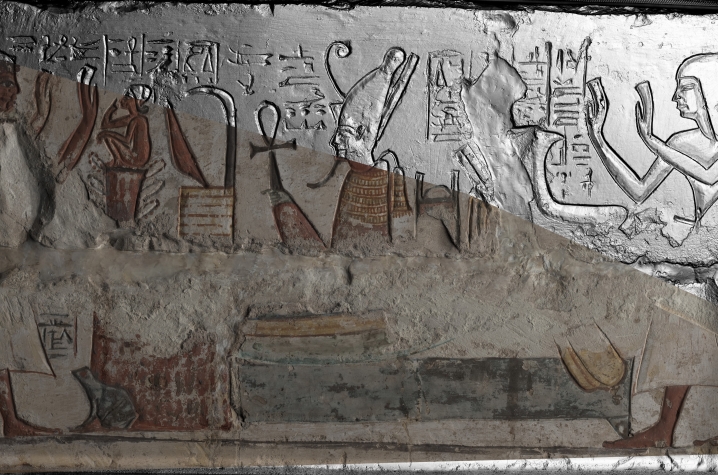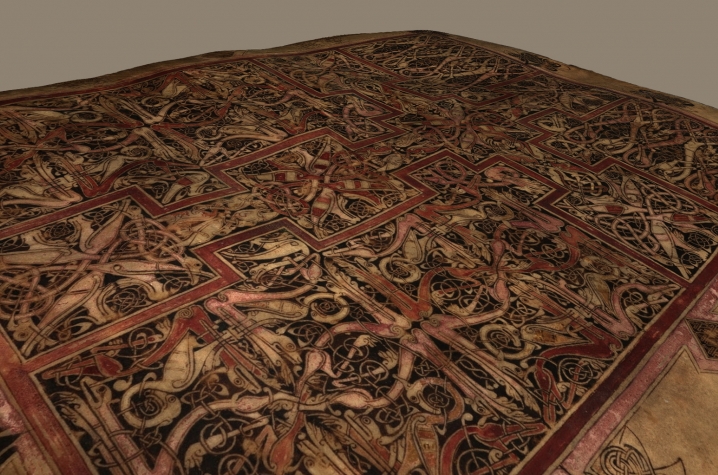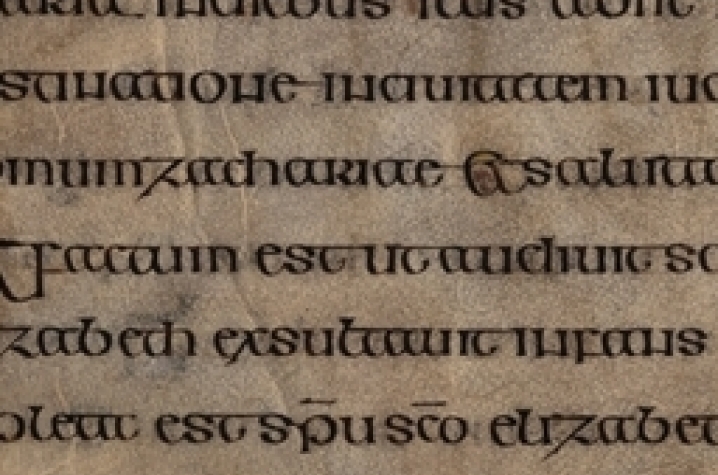UK Researcher Uses New Technology to Preserve Ancient Artifact
LEXINGTON, Ky. (July 3, 2014) — This July, a University of Kentucky professor is headed back to Lichfield Cathedral in England to continue a labor of love: digitizing the nearly 1,300-year-old St. Chad Gospels.
William Endres, an assistant professor in the College of Arts and Sciences Department of Writing, Rhetoric, and Digital Studies, has already captured multispectral and historical images of the St. Chad Gospels and rendered the manuscript in 3-D in 2010. However, he recently received a grant from the West Semitic Research Project to digitize the precious relic using a new technology called Reflectance Transformation Imaging (RTI).
To learn more, visit a podcast by Endres and a video that explains the process of 3-D rendering.
Endres said RTI was a necessary step in helping to preserve the priceless artifact. The manuscript has a long and turbulent history. The jeweled binding was likely torn off by marauding Vikings, and the delicate vellum pages have become warped over the years from water damage and ambient moisture. "Vellum absorbs water much more quickly than pigments; so as vellum expands, it puts stress on the pigments. When stress is placed on pigments, they crack. Once they crack sufficiently, chips of pigment break free," said Endres.
The detailed, high-relief view that RTI affords will allow scholars to see where pigment on the pages is rising up and preparing to flake off. Through RTI, preservationists will be able to pinpoint and address trouble spots that may have arisen since the manuscript’s pages were flattened, treated with liquid nylon and rebound in 1962.
RTI will also allow scholars around the world to see an intriguing facet of the St. Chad Gospels: its dry-point glosses. By design, dry-point glosses are notoriously difficult to see and nearly impossible to capture with regular photography. They are etched into the vellum with a stylus but no ink. However, these glosses are highly important. In the St Chad Gospels, these glosses are likely the names of scribes, who added their names because they believed that a great gospel-book like the St Chad Gospels functioned as a book of the living, that St. Peter would look at their manuscripts on Judgment Day and give a free pass into heaven for anyone whose name appeared in the margins.
Another surprising fact about the glosses is that three of the names are female. In the margins of the Magnificat page, where the pregnant Virgin Mary sings a song of praise to God, three Anglo-Saxon women's names appear: Berhtfled, Elfled and Wulfild.
"So if we're correct about these names, it's likely--or at least possible--that these women worked in the scriptorium at Lichfield Cathedral, had access to the St. Chad Gospels, and inscribed their names," said Endres.
He believes the presence of these names secures the manuscript's place as an important piece of feminist history, especially since so little is known about the day-to-day life of women in early medieval England. "But this page also speaks to a reclaiming of women's contributions to culture in a much larger way than just within the St. Chad Gospels. I find it's emblematic for the power of the feminist movement and the richness that the movement adds to our lives and understanding of our history."
In appreciation to Lichfield Cathedral for allowing him access to the St. Chad Gospels, Endres said he plans to give a series of lectures about the manuscript while he's in Lichfield, and he will also hold a class to teach local children how to do their own calligraphy, illumination and interlace art.
Endres said it's important for scholars to contribute to the communities that preserve important artifacts at great expense. Lichfield Cathedral, for example, receives no State funding to help care for the St. Chad Gospels and the Cathedral, even though the costs are substantial.
"This manuscript is very precious to Lichfield," said Endres. "I try to do things that will honor the manuscript's position within the community. It is a touchstone for the community’s Christian origins in Lichfield. The St Chad Gospels might be a treasure of the world, but it is the Lichfield community that has protected and preserved it through the ages.”
MEDIA CONTACT: Gail Hairston, gail.hairston@uky.edu, 859-257-3302









